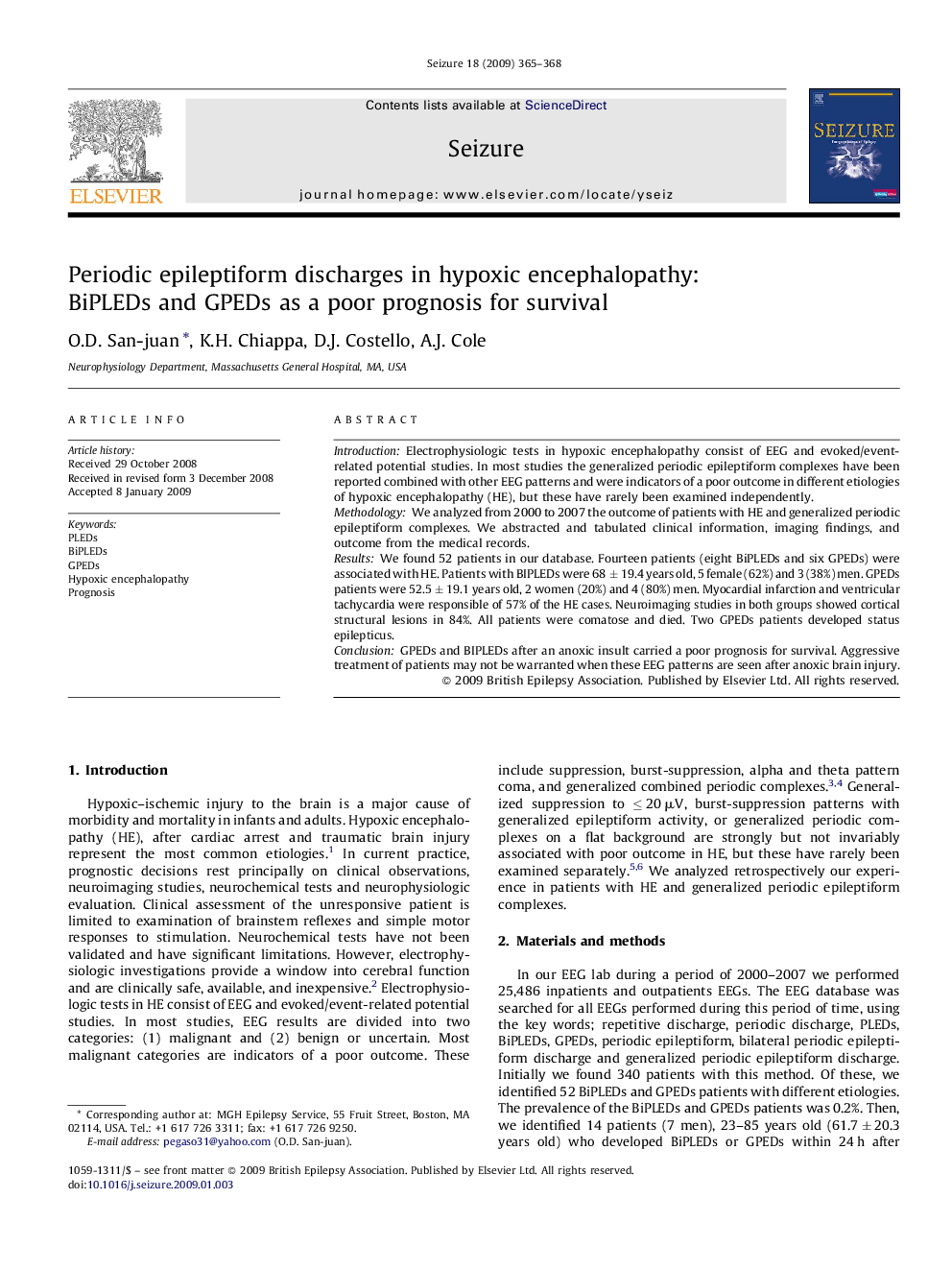| کد مقاله | کد نشریه | سال انتشار | مقاله انگلیسی | نسخه تمام متن |
|---|---|---|---|---|
| 342386 | 548816 | 2009 | 4 صفحه PDF | دانلود رایگان |

IntroductionElectrophysiologic tests in hypoxic encephalopathy consist of EEG and evoked/event-related potential studies. In most studies the generalized periodic epileptiform complexes have been reported combined with other EEG patterns and were indicators of a poor outcome in different etiologies of hypoxic encephalopathy (HE), but these have rarely been examined independently.MethodologyWe analyzed from 2000 to 2007 the outcome of patients with HE and generalized periodic epileptiform complexes. We abstracted and tabulated clinical information, imaging findings, and outcome from the medical records.ResultsWe found 52 patients in our database. Fourteen patients (eight BiPLEDs and six GPEDs) were associated with HE. Patients with BIPLEDs were 68 ± 19.4 years old, 5 female (62%) and 3 (38%) men. GPEDs patients were 52.5 ± 19.1 years old, 2 women (20%) and 4 (80%) men. Myocardial infarction and ventricular tachycardia were responsible of 57% of the HE cases. Neuroimaging studies in both groups showed cortical structural lesions in 84%. All patients were comatose and died. Two GPEDs patients developed status epilepticus.ConclusionGPEDs and BIPLEDs after an anoxic insult carried a poor prognosis for survival. Aggressive treatment of patients may not be warranted when these EEG patterns are seen after anoxic brain injury.
Journal: Seizure - Volume 18, Issue 5, June 2009, Pages 365–368